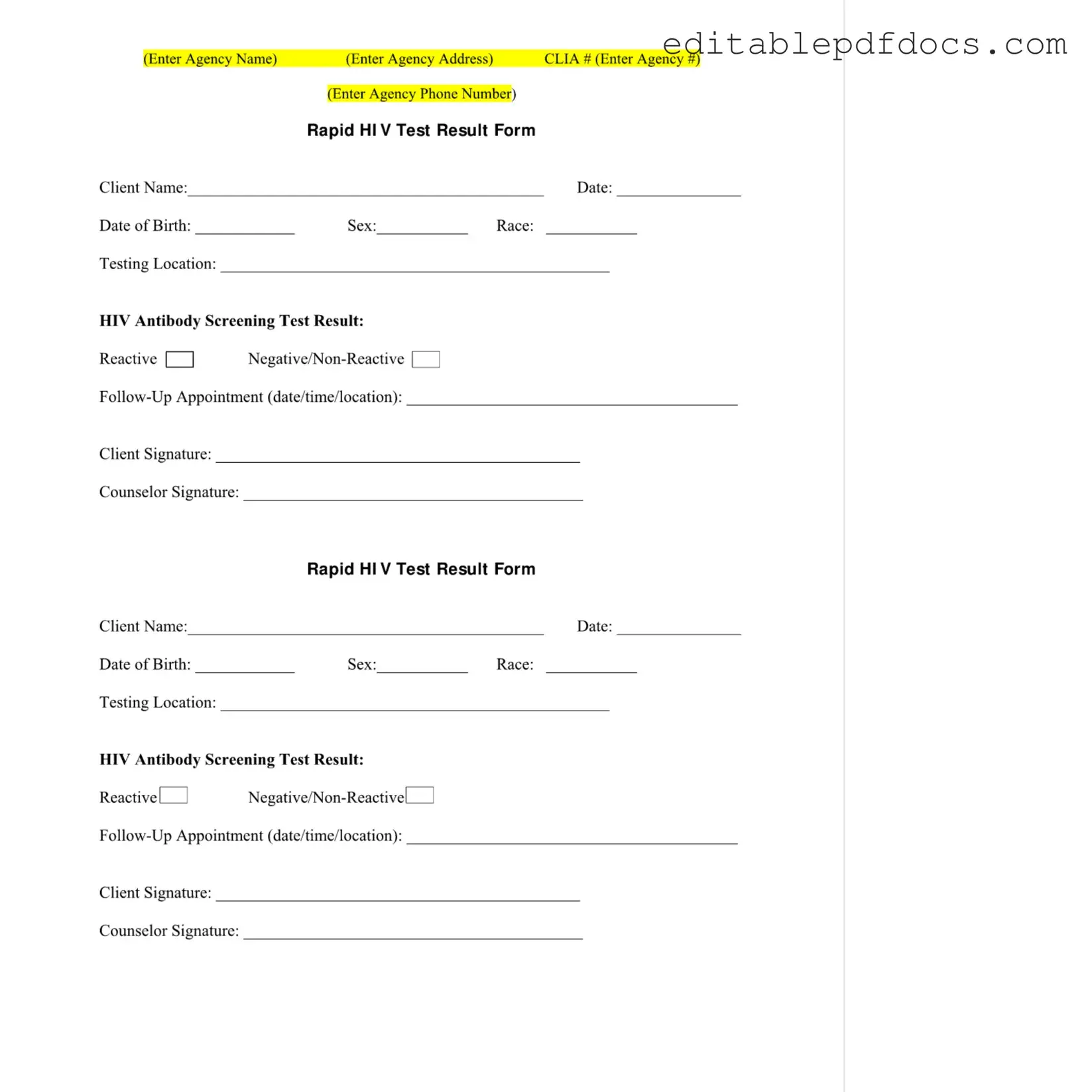Filling out the Negative HIV Test form is a crucial step in the testing process. However, many individuals make common mistakes that can lead to confusion or delays. One frequent error is failing to provide accurate personal information. For instance, the client's name and date of birth must be correct. If these details are wrong, it can complicate the results and follow-up procedures.
Another common mistake involves neglecting to check the testing location. The form requires the specific site where the test was conducted. Omitting this information may hinder tracking and reporting, which are essential for maintaining accurate health records.
People often overlook the importance of the HIV Antibody Screening Test Result section. Marking the result incorrectly can lead to serious misunderstandings. For example, if a client indicates a "Reactive" result when it should be "Negative/Non-Reactive," it could cause unnecessary alarm and further testing.
Additionally, clients sometimes forget to sign the form. The client signature is vital for confirming that the individual has received the test and understands the results. Without this signature, the form may be considered incomplete, which can delay the process.
Moreover, many individuals do not pay attention to the follow-up appointment details. Leaving this section blank or entering incorrect information can lead to missed appointments, which are crucial for ongoing health management. Proper follow-up is essential for anyone who has undergone testing.
Lastly, some people neglect to review the storage temperature logs for the testing devices. These logs ensure that tests are conducted under the right conditions. If the temperature is not recorded accurately, it could jeopardize the reliability of the test results. Keeping track of these details is not just a formality; it is a critical part of ensuring accurate and trustworthy testing outcomes.
